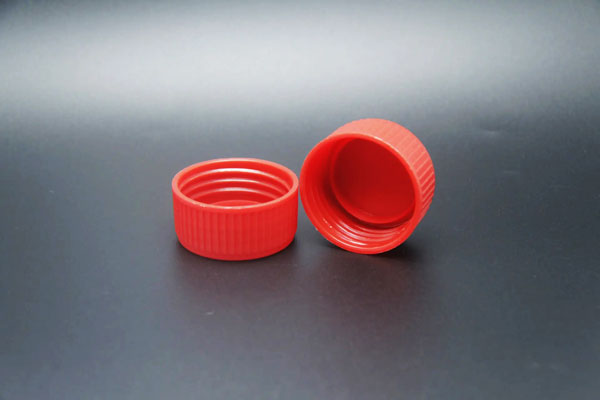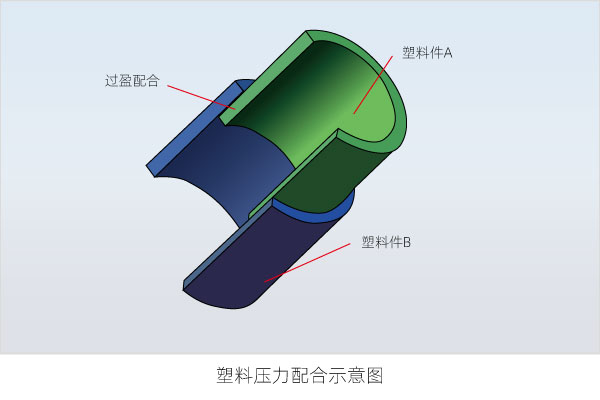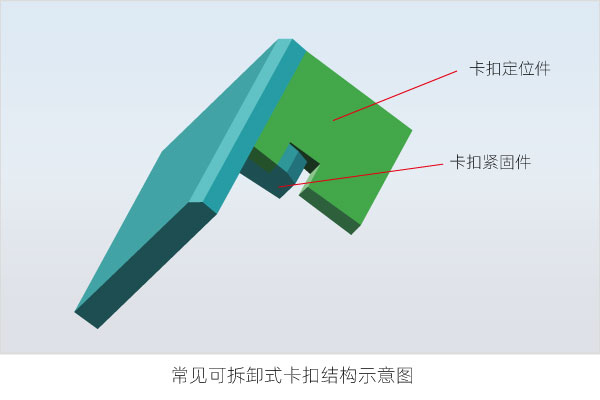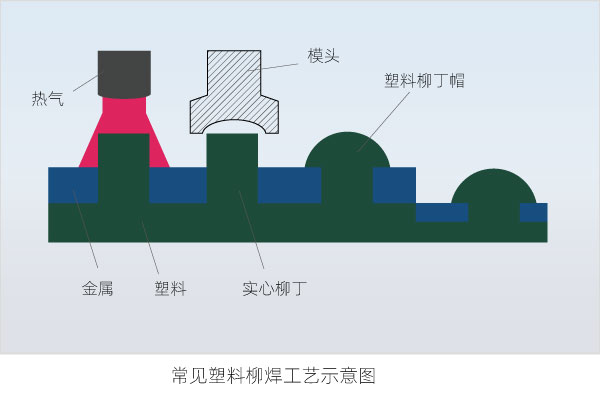首页 > NEWS > Company News
【summary】
Plastics are widely used in medical devices, automobiles and daily products due to their advantages such as light weight, good impact resistance, good transparency, good insulation, good formability, good colorability and low processing cost. The final performance of plastic parts mainly depends on the connection method between plastic parts.
Plastics have many advantages such as light weight, good impact resistance, good transparency, good insulation, good formability, good colorability, and low processing cost, so they are widely used in medical devices, automobiles, and daily products. The final performance of plastic parts mainly depends on the connection method between plastic parts. After long-term research and practice, scientists and related engineering and technical personnel have developed many different plastic connection methods. This article briefly introduces these plastic connection technologies, hoping to provide a reference for designers in related fields to choose plastic connection methods.
7. Molded thread connection
Molded thread connection refers to the formation of threads directly on plastic parts through the design of injection molds, and then connecting with other threads with the same tooth type, nominal diameter and other parameters.
The threads on plastic products are divided into external threads and internal threads. External threads are usually demolded with sliders, and internal threads are demolded with twisted teeth. Among them, the structure of external threads is relatively simple, and the plastic product will leave parting line marks on the plastic product after molding. If the parting line marks obviously affect the product appearance and thread fit. The principle is to slide through the inclined guide pin and then eject the product. The internal thread mold can be divided into the following categories: 1. Forced thread removal structure (non-rotation). 2. Non-forced thread removal (rotation). At present, plastic threads are mainly used to make bottle caps.

8. Threaded connection tapping thread
Plastic tapping thread connection means drilling holes in plastic parts first, then tapping to form threads, and then connecting to other parts with threads. This method is similar to metal.
Its advantages are: the process has no requirements on the shape of plastic parts, and accurate positioning holes can be obtained through precision mechanical tools.
9. Pressure fit
Pressure fit is also called force fit, interference fit and shrink fit. The shaft and hole of the assembly relationship interference fit can be assembled together under the action of a certain pressure. The assembly between the two parts can also be done by heating the hole to enlarge the hole or cooling the shaft to reduce the size of the shaft. After assembly, when the two parts return to the same temperature, interference fit will occur. It uses the elastic deformation of the hole and shaft connecting the plastic parts, and can transmit a certain torque or axial force after assembly.

10. Snap-on connection
Snap-on is a mechanism used to embed or integrally lock one part and another part. It is usually used to connect plastic parts. Its material is usually composed of plastic materials with a certain degree of flexibility. The biggest feature of snap-on connection is that it is easy to install and disassemble, and it can avoid tool disassembly.
Generally speaking, snap-on consists of positioning parts and fasteners. The role of the positioning part is to guide the snap-on to the installation position smoothly, correctly and quickly during the installation process. The role of the fastener is to lock the snap-on on the substrate and ensure that it will not fall off during use. According to different usage occasions and requirements, fasteners are divided into removable fasteners and non-removable fasteners. Removable fasteners are usually designed so that when a certain separation force is applied, the snaps will separate and the two connected parts will separate. This snap is usually used to connect two parts that need to be frequently disassembled. Non-removable fasteners require manual deviation of the fasteners to allow the two parts to be used during the disassembly process.

11. Plastic riveting
Riveting process, especially for connecting parts made of different materials (such as plastic and metal). There is a rivet post on one part, which extends into the hole of the other part. The rivet post is then deformed by cold flow or plastic melting to form a rivet head, which mechanically locks the two parts together. By changing the design of the welding head, a variety of different rivet head designs can be obtained.
Cold riveting: In cold riveting, the rivet post is deformed by high pressure. Cold flow causes greater stress in the rivet post area, so it is only suitable for plastics with good ductility.
Hot Rivet Welding: In hot riveting welding, the compression welding head is hot, so the pressure required to form the riveted joint on the riveted post is very small and the residual stresses generated in the riveted joint are also very small. It can be used for a much wider range of thermoplastic materials, including glass-filled materials. The quality of the joint depends on the control of the process parameters: temperature, pressure and time.
Hot Rivet Welding: In hot riveting welding, the riveted post is heated by means of a superheated air flow, which is heated through an air tube around the riveted post. The independent cold welding head is then lowered and the riveted post is compressed.
Ultrasonic riveting welding: In ultrasonic riveting welding, the rivet post is melted by the ultrasonic energy provided by the horn. During the continuous pressure of the horn, the molten rivet post material flows into the cavity of the horn to form the desired riveted joint design style.

Plastic parts welding process
The welding principle is the same. First, heat and melt the butt joint surfaces of the two plastic parts to be welded, then increase the butt joint pressure of the welding surface, and maintain the pressure for a certain period of time before the welding surface solidifies, which means that the welding is successful.
12. Induction welding
When the high-frequency electron tube oscillates, the high-frequency equipment high-voltage rectification self-excited high-frequency electron tube is mainly used to generate electromagnetic wave current electric field, and the processing of PVC, TPU, EVA, PET and other plastics and plastic materials in the electromagnetic wave electric field, the internal molecules of the plastic and plastic materials generate polar friction and generate heat. Under a certain pressure, plastics and plastic products that need heat sealing can achieve welding effect.
| Free solutions/free proofing 13710252340
Previous: What are the welding methods f